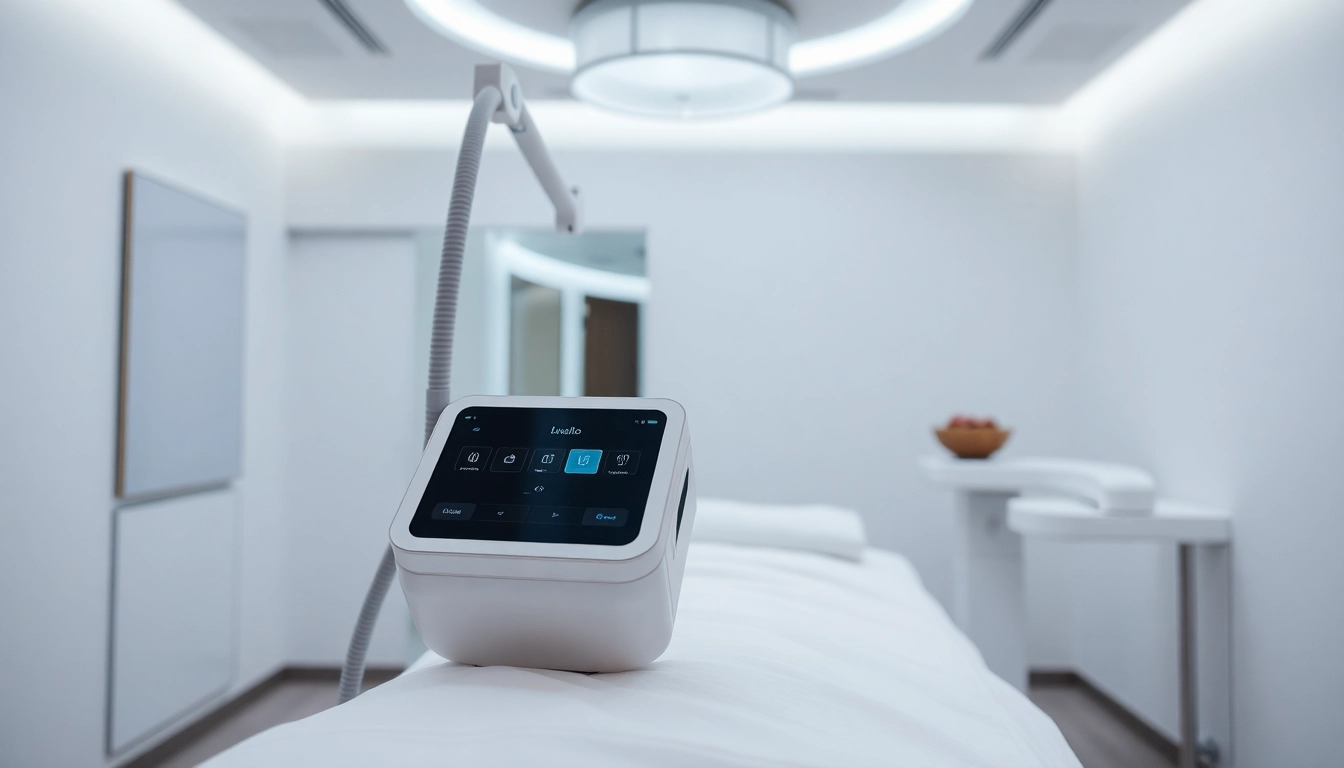
Achieve Your Body Goals: Understanding Noninvasive Lipo Techniques and Benefits
Overview of Noninvasive Lipo
What is Noninvasive Lipo?
Noninvasive lipo, often referred to as non-surgical fat reduction, is a popular alternative to traditional liposuction. Unlike conventional liposuction that involves surgical intervention, anesthesia, and recovery periods, noninvasive lipo employs various technological advancements to reduce fat pockets without incisions or significant downtime. This modern approach provides patients with a way to sculpt their bodies and achieve their desired look without the risks typically associated with surgical procedures.
In the realm of aesthetics, these noninvasive techniques use methods such as cooling, heating, or ultrasound waves to target and eliminate fat cells selectively. With its increasing popularity, many individuals are now seeking noninvasive lipo as an effective way to address stubborn areas of fat that do not respond to diet and exercise.
How Does Noninvasive Lipo Work?
Noninvasive lipo operates on the premise of destroying fat cells through various mechanisms, depending on the specific technique used. One of the most common methods is cryolipolysis, commonly known as CoolSculpting, where fat cells are frozen and subsequently eliminated by the body’s natural metabolic processes. Another method is laser lipolysis, which uses laser energy to heat and disrupt fat cells, allowing the body to dispose of them over time. The objective of these procedures is to create a gradual, natural-looking reduction in fat.
During a session, practitioners mark the target areas where fat reduction is desired, apply the respective technology (cold, heat, or ultrasound), and the treatment typically takes about one to two hours, depending on the area being treated. Patients often walk away immediately after the session without any need for assistance or recovery time.
Comparing Noninvasive Lipo to Traditional Liposuction
When weighing the differences between noninvasive lipo and traditional liposuction, it is crucial to consider various factors such as recovery time, effectiveness, and suitability for individual needs. Traditional liposuction is a surgical procedure involving incisions, anesthesia, and a significant recovery period, making it more invasive and sometimes risky. It is ideal for patients aiming for a considerable fat removal from larger areas.
In contrast, noninvasive lipo techniques tend to focus on smaller fat deposits specific to trouble areas, such as love handles, abdomen, thighs, or arms. While noninvasive methods generally offer less dramatic results, they provide a safer alternative with fewer risks and no downtime, appealing to those with a busy lifestyle or who may be apprehensive about surgery.
Benefits of Noninvasive Lipo
Minimal Downtime and Recovery
One of the most significant advantages of noninvasive lipo is the reduced downtime associated with these procedures. Patients can typically resume their daily routine right after the treatment without the need for extensive recovery time. Unlike traditional liposuction, where patients may require several days or even weeks to recover, noninvasive techniques allow for immediate return to work or exercise, making it a convenient option for busy individuals.
Long-Lasting Results Without Surgery
While noninvasive lipo does not produce immediate results, many patients notice significant changes in their appearance within a few weeks following the procedure. As fat cells are gradually eliminated from the body, users can enjoy long-lasting results that can remain visible for several months, or even longer with a healthy lifestyle. With a proper diet and regular exercise routine, these results can often be maintained long-term, allowing patients to feel more confident in their bodies.
Targeted Fat Reduction
An important advantage of noninvasive lipo techniques is their ability to target specific areas of the body with precision. This is particularly beneficial for individuals who wish to address localized fat deposits that are resistant to diet and exercise, such as stubborn belly fat or love handles. By utilizing focused technologies, noninvasive methods can effectively contour the body, providing tailored results that appeal to the individual’s unique aesthetic goals.
Common Noninvasive Lipo Techniques
Cryolipolysis: Freezing Away Fat
Cryolipolysis, commonly known by the brand name CoolSculpting, is one of the most popular forms of noninvasive lipo. This method employs precise cooling technology to freeze fat cells in targeted areas of the body. The process begins with the application of a gel pad and applicator to the desired area. The device then cools the fat, effectively destroying the cells without harming the surrounding skin or tissue. Over weeks, the body naturally metabolizes and eliminates the frozen fat cells, resulting in a noticeable reduction in fat.
Clinical studies indicate that cryolipolysis can reduce fat by up to 25% in the treated area, providing patients with a visible change in body contour. Many individuals favor this method for its effectiveness and minimal side effects, generally limited to temporary redness or swelling.
Laser Lipolysis: How it Works
Laser lipolysis utilizes laser energy to heat and disrupt fat cells. During the procedure, a laser device is applied externally to the skin overlying the desired treatment area. Laser energy selectively targets fat cells, which then break down and are naturally expelled by the body. Similar to cryolipolysis, this technique allows for body contouring without the need for invasive surgery.
Patients often experience mild discomfort during the session, but recovery is swift, allowing individuals to return to their normal activities within a short time post-treatment. The effects can be noticed within a few weeks, with optimal results typically visible after three months.
Radiofrequency Lipolysis Explained
Radiofrequency lipolysis is another innovative technique for noninvasive fat reduction. This method uses radiofrequency waves to heat the fat cells beneath the skin, promoting an increase in metabolism, which ultimately aids in fat breakdown. The process can also stimulate collagen production, which helps improve skin tone and texture. This dual action can result in both fat reduction and skin tightening, making it an attractive option for individuals looking for holistic body contouring.
Sessions generally last about 30 to 60 minutes, and while some individuals might experience temporary swelling or redness, most report minimal discomfort. Because of its effectiveness in reshaping and tightening skin, radiofrequency lipolysis is often recommended for areas where sagging skin might also be a concern.
What to Expect During Treatment
The Treatment Process
Before undergoing any noninvasive lipo procedure, a consultation with a qualified practitioner is essential. This meeting allows for a tailored treatment plan that addresses specific goals and expectations. During the treatment, patients can expect to undergo the following process, which may vary slightly depending on the chosen technique:
- Pre-Treatment Assessment: The practitioner assesses the areas to be treated and discusses expectations with the patient.
- Application of Treatment: The selected technology (cryolipolysis, laser, or radiofrequency) is applied to the targeted areas. Patients may feel a cooling, heating, or mild tugging sensation.
- Session Duration: Most treatments last from 30 minutes to 2 hours, depending on the areas being targeted.
Post-Treatment Care Tips
Post-treatment care is minimal with noninvasive lipo, but some general guidelines can enhance recovery and results:
- Hydrate: Drinking plenty of water aids in flushing out the fat cells and helps maintain overall skin health.
- Avoid Intense Exercise: Patients should refrain from strenuous activities for a few days following treatment to allow the body to heal.
- Monitor Changes: Keeping track of the changes in your body over several weeks will help validate results.
Managing Expectations: Results and Timeline
While immediate results are not to be expected with noninvasive lipo, gradual changes typically become apparent within a few weeks post-treatment. Most patients report optimal results around three months after the procedure, as the body continues to eliminate treated fat cells. It is crucial to maintain realistic standards when assessing outcomes; results can vary based on individual factors such as initial body composition, targeted area, and adherence to healthy lifestyle choices.
Addressing Concerns About Noninvasive Lipo
Is Noninvasive Lipo Safe?
Safety is a primary concern when considering any cosmetic procedure. Noninvasive lipo techniques are generally regarded as safe, with adverse events being relatively rare. Side effects, when they occur, tend to be mild and temporary, involving redness, swelling, or tenderness in the treated areas.
However, individuals must choose qualified and experienced practitioners to mitigate risks further. Researching the facility and examining practitioner qualifications can help patients ensure they are making an informed decision.
Who are Ideal Candidates?
Ideal candidates for noninvasive lipo are those who are within 30% of their ideal body weight and have pockets of fat that are resistant to diet and exercise. It is not intended for significant weight loss, rather for refining and contouring specific areas of the body. Healthy individuals without contraindications, such as certain medical conditions or who are pregnant/nursing, are generally good candidates for these procedures.
Consultation with a professional can help determine suitability and ensure expectations align with achievable results, promoting a more satisfying experience.
Evaluating Costs and Potential Risks
The cost of noninvasive lipo can vary greatly depending on various factors including the technology used, the area being treated, and geographic location. Generally, patients can expect to pay anywhere from $1,500 to $4,000 for multiple sessions. It is essential to consider these costs and recognize that, while noninvasive methods provide advantages such as limited downtime, they may require several sessions for desired results.
Potential risks, although minimal, may include uneven results, skin laxity, or other transient aesthetic issues. Consulting with an experienced practitioner prior to treatment will help clarify financial investment and discuss any relevant risks thoroughly.
